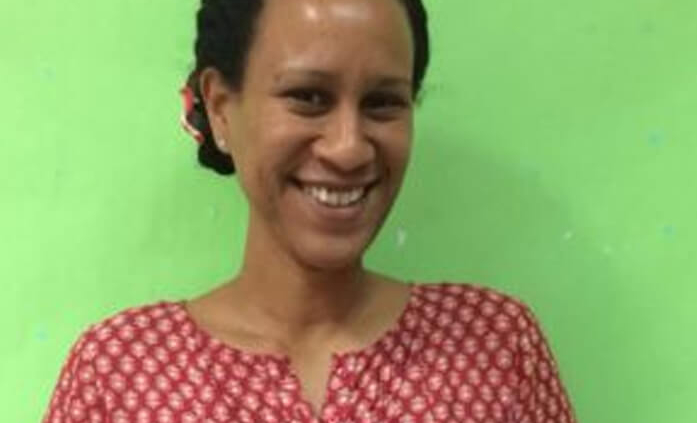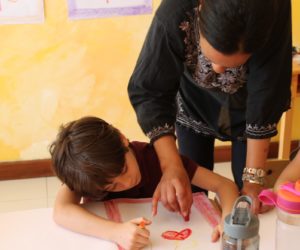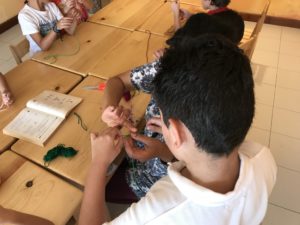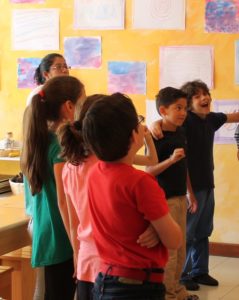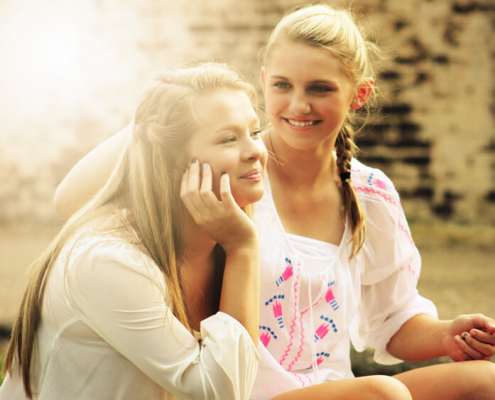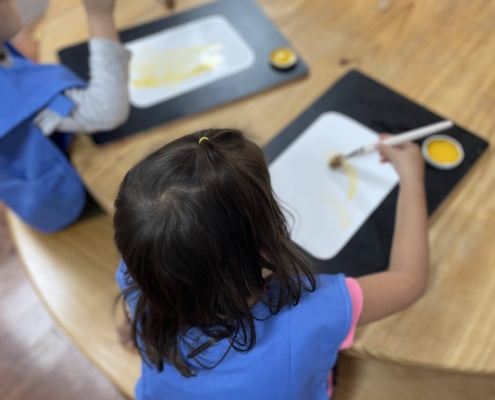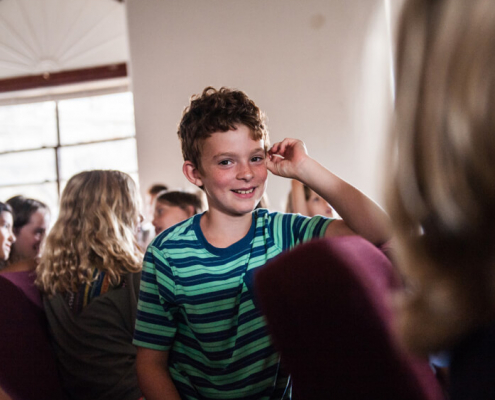Creative Discipline
Understanding Creative Discipline in the early years
By: Réne Petersen, Trinus teacher
Introduction
As teachers and parents, every day is filled with moments which require us to consider which lessons we would like to teach our children. Creative discipline is then a process which we work with constantly so that we become more flexible and confident when approaching our children. We need to be open and flexible and accept the fact that we will make mistakes and that that is ok! We love our children and want what is best for them and we are human. Children are incredibly forgiving and when we act from a space of love, we also must love ourselves enough to forgive ourselves when we make mistakes, as this is a journey for us too. Children do not want to hold grudges. They need to know we love them and they want to love us!
Thoughts to consider:
- IMITATION-BE IT!!! WE NEED TO SHOW THE CHILDREN THE QUALITIES WE WANT THEM TO LEARN BY LIVING THEM. Young children learn by watching and imitating us. This is a fact we need to absorb, reflect on and accept. E.g. so to have Good manners- they need to see us saying please and thank you. To learn Punctuality- they need to live it with and in their families and environment.
- MOTIVATION– Can the child understand WHY they need to do what we say? Young children do it for US- for our love and attention and to make us happy. As they get older we need them to do it out of themselves!! As children get older we need to develop their inner motivation skills. Beware of reward based motivation as this does not develop internal motivation- here children’s motivation is dependent on rewards or getting something other than inner satisfaction, pride and the love of hard work.
- EXPECTATIONS: Tell them” this is how it needs to go” so they KNOW exactly what is expected of them BOUNDARIES are also essential for children. They need to feel safe- so they know: “I can push this far and then I meet my teacher or my mother or father- so basically I am held. My surroundings and my world are reliable, stable” (As far as possible because we do live in an unpredictable world!) I have worked with special needs children as young as 2 years old; and this idea of never saying no to a child is something I have had to think deeply about. Because clearly there are some things/situations behaviors which are a definite NO! And children need to know that! Also- in this day and age saying “no” is a problem many adults struggle with. So why not show our children that it is ok to say no.
- RHYTHM- SAFETY AND SECURITY!! Rhythm is important so children know what to expect and that makes them feel safe and secure, again, that they are held in the world. There is a time and a place for everything. Rhythm is another way we can develop good habits that become second nature to the children.
- ATTENTION: Why is the child behaving this way?? Do they like negative attention- because being “naughty” gets the attention of adults?? Some children act out because that is how they get your attention.
- Here PRAISE and ACKNOWLEDGEMENT come in strongly. Acknowledge their efforts when you see them doing well so that they want this positive attention. And don’t forget to acknowledge and “see” the good children too.
Why is the Waldorf approach to discipline different?
Because we don’t go straight to one standardised policy on discipline. In working with the entire being of the child we always ask “What does this child need, how will I teach them and WHY am I doing this?”
- CHILD APPROPRIATE: Different strategies are needed because children react differently to different approaches. In the classroom one of the most effective discipline tools is to be silent even. Then children know that this is serious. Some children just need to MOVE. At times children lash out because they need to release some of the pent up energy they have. So when it comes to creative discipline it is ESSENTIAL TO KNOW THE CHILD! Then one can sense what the right way to approach the problem is.
- AGE APPROPRIATE: A young child cannot sit and discuss their feelings with you because they do not yet have a true sense of self. They are not yet capable of that self-reflection and analysis. At different ages children need different approaches. Discipline must be age-appropriate in order to be effective!
- CLEAR INTENTION– what do we want the child to learn or gain? So for a repeated litterer writing lines wouldn’t help us teach the child the lessons. So we let this child clean! With the young child we have them with us while we pick it up. We want children to learn from their mistakes. We want to SHOW them the appropriate behaviour and we want them to think about how to FIX IT. If you tell your child “if you don’t clean up I will take away your toys” and they say: “Ok daddy I don’t want this anyway” then take the toys! Don’t worry that they are not learning anything because once the toys are taken away YOU won’t have to pick them up again or struggle with this
- DISCERNMENT– PICK YOUR BATTLES! Sometimes it is best to laugh it off, sometimes we can leave children to figure it out amongst themselves, and sometimes we can ignore it. We also need to learn to use the long discussion effectively. Ask yourself: “Is it really the end of the world if my child goes to the car without shoes on?” Picking battles is also important because it is linked to Consistency. Because if you do it once you need to do it EVERY time.
- OPEN TO TRY ANYTHING- we can’t say “I will never say no to my child” or “My child will never be forced to do anything like I was”. We can NEVER give up on our children! So we try something and then try another. We need to be FLEXIBLE in our consistency!!
- BOREDOM- is the birthplace of creativity but also can be negative if a child is unstimulated or not challenged enough. I am not talking about a child saying “I’m bored” after sitting with a puzzle for 5 minutes after you took their iPad away. Because that “bored” is because the puzzle is too difficult or actually the only thing they want to do is watch a movie. I am talking about a child in Math lessons who is not stimulated by the content or engaged enough. I am talking about the child who is bored after watching movies all day… These children may act out or misbehave because they are totally disengaged or unstimulated. This is something to watch out for and balance- child specific.
- SENSE OF HUMOR! It is ok to laugh with your children!! Laughter is like a breath of fresh air and it lightens a tense situation. Sometimes you don’t laugh outwardly but inside you can keep your spirit light and discipline more creatively out of that space. This also helps with discernment- because some things are really not that big of a deal when we don’t take ourselves or life too seriously. A sense of humor is also a great way to connect with your children as it shows them things are not always serious.
- FROM A PLACE OF LOVE. The heart of discipline is that WE LOVE OUR CHILDREN. So repeat this over and over in your head when faced with a difficult situation. Ultimately we do what we do because we love our children and care about them. Keep that as your intention.
- THE PAUSE!! This I love about being a waldorf teacher- we foster an environment of space, both inwardly and outwardly. So take a breath, pause and think “What is the right action here?” We can give ourselves space by dealing with something later. Some children are too emotional to deal immediately so we can leave the “lesson” for later once they (and often we) have had space to calm down. And in the pause we can say our mantra “I love this child so much, I love this child so much…” J Let’s remind ourselves to be patient with them and with us
Strategies we employ in Trinus which is Waldorf inspired:
- RHYTHM: Essential- a strong, stable sense of rhythm helps children feel safe. There is a rhythm to every day, every lesson, there is rhythm through the year by the seasons; there is rhythm in our bodies and in our thinking and in our hearts.
- HEALING STORY: A uniquely Waldorf strategy- the teacher writes a story for the child displaying the inappropriate behavior to give the child pictures they can identify with and relate to. So we don’t say “you are so clumsy no one wants to play with you because you break everything and are too loud” Rather, we tell them a story about an elephant who gets so excited she rushes into everything and knocks over her friends games…. Etc. And we always have a moment of redemption in the story “the elephant let her friends show her how to be gentle and she learned to use her body well and now she plays so happily and calmly…….” We can take the story to sad place, then redemption!! It is good to engage their feelings deeply. The child will identify themselves and those in the class will too.
- MAKING IT EASY TO BEHAVE: We want to prevent bad behavior- so the day allows for breathing- so bodies don’t get restless, so minds don’t get tired. Want to make it fun! They behave because they don’t want to miss out. They know what is coming in the rhythm of the day. They know what expectations are and where the boundaries are strongly in place. So when situations come up we can deal with them as they arise.
- SHOW THEM/LIVE IT: as teachers we show the behaviour we expect. For example, if I make a mistake I say sorry. At lunch I finish all my food. This is of course easier said than done, but for them to see our efforts/that we are trying is very powerful.
- TEACHER AS LOVING AUTHORITY: children need to love their teacher and respect them. So we put much effort into creating this sense of warmth and community- wow my teacher sees ME and really cares about ME. And at home it is the parents as the loving authority.
- REPETITION- instilling good behaviour is not a one off thing!! We guide children by repeatedly demonstrating appropriate behaviour. We doing the right thing become habit- so every day we pack away what we played with. Every day we eat all our food, every day we sing and share TOGETHER. And children have to DO something and be active!! Strong connection to rhythm, expectations, boundaries, consistency. This is for all our children. Let them work!
- STRONG CONNECTION BETWEEN HOME AND TRINUS! Children need to know that we are all a community. That the parents know what is going on at Trinus and vice versa. This is why it is essential for parents to communicate any changes at home or disruptions from the routine e.g. mother travelling death in the family etc. Children are so sensitive and the younger ones may not be able to tell us what is going on- but their behavior will reflect this. Then I also implore you- please do not overreact to your child’s stories about “Oh my teacher did this or said this” PLEASE FIRST CHECK WITH YOUR TEACHER! We need to speak well about one another and respect each other so that the children know there is no space for them to play us against each other. And to teach them about respect and co-operation.
- CHILDREN´S ATTITUDES: Creative discipline may make sense for us as adults but for children this is so difficult! So they will come home and possibly paint a picture of a teacher who is an ogre, because really- who wants to be told what to do all the time. But a teacher who is involved is the one who cares!! My children think our fruit time is a party- and that is ok! We are developing our healthy classroom environment and eating fruit and enjoying being together! We want our children to LOVE coming to Trinus. And such powerful work and skills are being developed through play.
If you only remember one paragraph from this let it be:
Creative discipline must be:
- Age Appropriate
- Child Appropriate
- With clear intention- what do you want the child to gain or learn?
- Open to try anything- we cannot give up on a child
- Flexible
- With a sense of humour
- Consistent
- From a place of love

